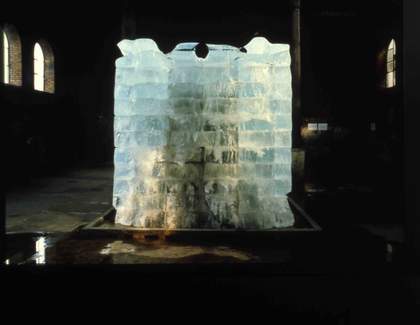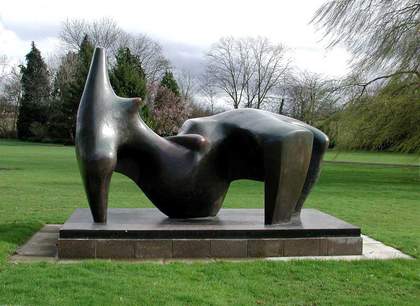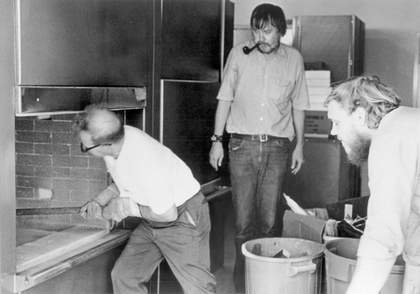intensities and surfaces, 1996
In the 1990s British artist Anya Gallaccio became well known for creating artworks that focused on, and made evident, processes of change and were themselves impermanent. Intensities and surfaces was a striking example of Gallaccio’s exploration of the transient.
Sited in a nineteenth-century water pumping station in east London and made simply from slabs of ice stacked around an inner core of rock salt, the sculpture melted over a period of three months in spring 1996. Its block-like form referenced the grid structures famously associated with minimalist artists such as Donald Judd and Carl Andre. But into an artistic vocabulary associated with permanence and industrial precision, Gallaccio introduced evanescence and the idea of cycles of transformation.

Anya Gallaccio, intensities and surfaces, photographed in April 1996.
Copyright the artist, courtesy Thomas Dane Gallery, London
Intensities and surfaces melted not only because of the ambient temperature but also because hidden at its core was a block of rock salt. The salt helped corrode the structure in unpredictable ways, creating dramatic changes and shapes reminiscent of weathered rocks. The pristine beauty of the original block was lost, but instead the work offered a play of changing reflections in the widening pool of water of the boiler room floor.
As discussed in the Gallery of Lost Art, such works call into question the sense of loss and regret usually associated with artworks that are no longer extant.



